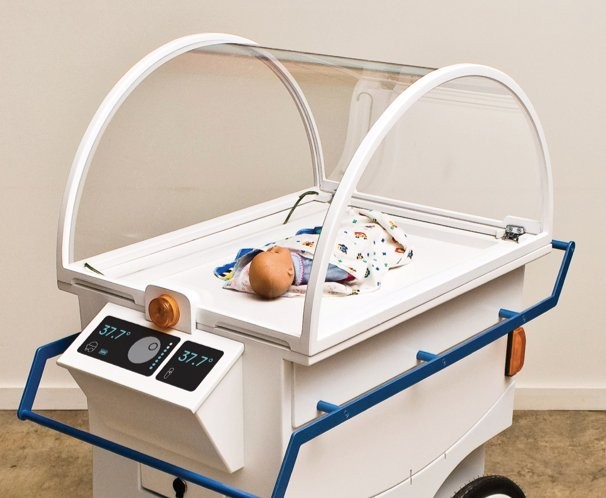I came across this ingenious incubator when I was reading the book Where Good Ideas Come From by Steven Johnson. In the book, Johnson uses The NeoNurture incubator as a fantastic example of something he calls "innovating the adjacent possible."
The term adjacent possible was actually coined by the scientist Stuart Kauffman. Johnson defines the term like this:
The adjacent possible is a kind of shadow future, hovering on the edges of the present state of things, a map of all the ways in which the present can reinvent itself.
The difficulty of design, it seems to me,is all about finding and exploiting possibilities in a useful way, finding the pathways that lead you from the "present state of things" to a better, "reinvented" state.To that end, we often strive to think big and build a new future by getting beyond our limitations. We tend to see innovation as overcoming some critical problem with a massive leap forward.
But maybe, just maybe we really just need to embrace the limitations and not try to overcome them; perhaps we need to explore our constraints and the boundaries they present. Because there is a funny little phenomenon in here that Johnson points out:
The strange and beautiful truth about the adjacent possible is that its boundaries grow as you explore those boundaries.
The NeoNurture incubator is all about finding a new future and changing the scope of possibility by accepting and acknowledging the present limitations and boundaries. By some estimates 95% of all medical technology donated to countries in the developing world breaks in the first 5 years of use. That's because the environments are rough on equipment and there is little expertise in fixing these pretty complex devices. Furthermore, replacement parts are not readily available. One solution would be to train more people and improve access to parts. But that would be trying to solve a problem with thinking that is beyond the boundaries of practicality; that would be hunting for a solution outside the scope of the adjacent possible.
The people at Design that Matters found a remarkably elegant solution within the current constraints of the developing world.
The towns of developing countries "might have lacked air conditioning and laptops and cable television, but they managed to keep their Toyota 4Runners on the road." While skill and expertise with medical devices was slim, there were lots of people that knew cars. And it was clear that there was ready access to car parts. So, they asked, "What if we made the incubator out of car parts?" Turns out that's what they did:

It looks like a modern incubator but it's all auto parts on the inside. Headlights provide the warmth; dashboard fans circulate air; power can be provided by an adapted cigarette lighter or a motorcycle battery. It's not just extremely inventive, it's innovative in an extremely practical way.It changes the world by not demanding a change in the world. It turns constraint from a negative (limitation) to a positive (a whole new scope of possibilities).And that kind of transformation is a really inspiring thing (even if it never made it into production )
I don't think this is only inspirational. This particular transformation of constraint highlights a need for user-centric thinking and processes in general.Constraint is all around and presents a constant challenge for everyone, everyday... and most of it has to do with people: their knowledge, dispositions, experience, cultural tendencies, generational idiosyncrasies, and more.
They designed a complex medical device around the limited expertise and resources of the people as opposed to forcing people to augment their knowledge, expertise, and resources to support the device.It's classically user-centric. And that's something we can all do everyday.User-centrism, from one perspective, can be seen as the process of embracing and exploring human constraint. When we approach things that way, we can begin to see limitations as a "map of all the ways the present can re-invent itself."And that makes constraint less of design problem and more of an element that guides us.